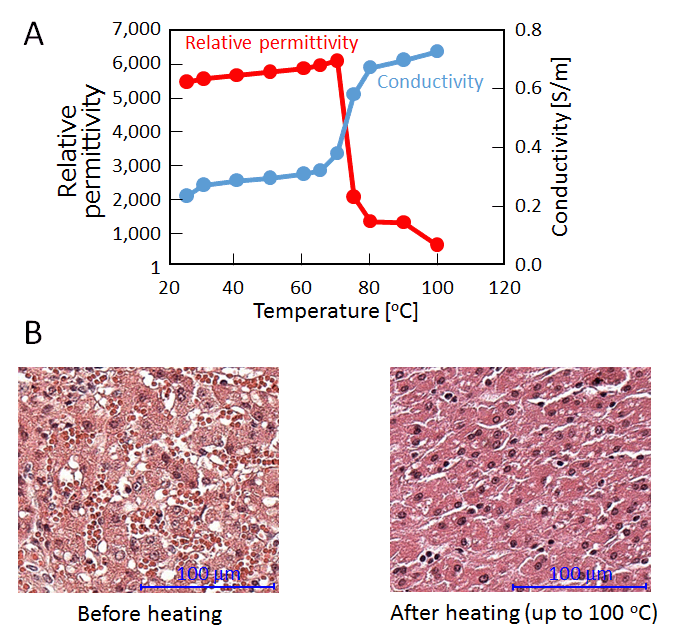Observations of biological tissue properties by electromagnetic wave
In order to evaluate the biological effects of electromagnetic waves, we need to learn the electrical characteristics of biological tissues. These electrical characteristics differ greatly depending on the measuring frequency. As users of portable wireless terminals have increased, the electrical properties of biological tissues for frequencies from several hundred MHz to several GHz, which wireless terminals employ, have been measured. In this laboratory, we measured the electrical constants of biological tissues for frequencies from several hundred kHz to several tens of MHz, employed by such equipment as hyperthermic devices and electrocautery apparatus. We also simultaneously measured the temperature dependence of the electric constants of the measurement samples. Figure A shows the relative permittivities and conductivities. We measured swine liver tissue using 300 kHz. It turned out that the electric constants change significantly from 60 to 70°C, at which temperature the thermal denaturation of biological tissues occurs. Figure B also shows the results from stained cell tissues we observed by using a microscope in order to explore the reasons why the electric constants changed so significantly. It is possible to observe the cell nucleus and cell membrane in unheated tissues. By contrast, it seems that the cytoplasm within a cell flows out after cell membrane destruction in tissues heated to 100°C.




